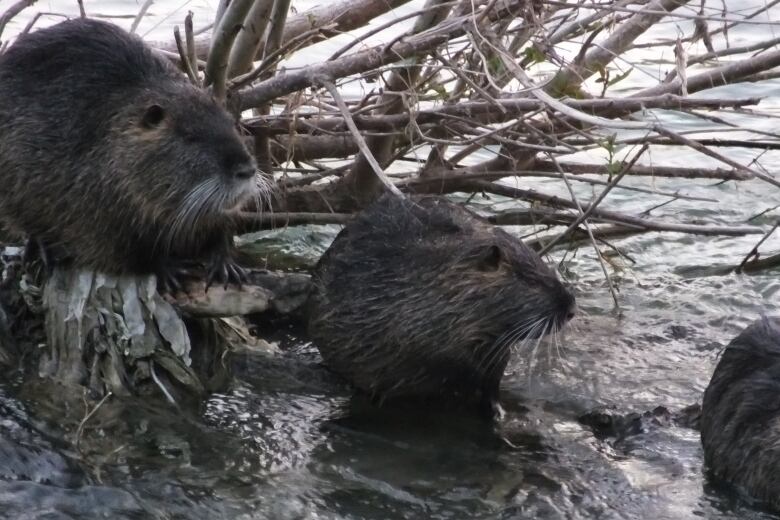Great parenting: 4 animals that care for their young in 'amazing' ways
Some parents are a little more dedicated than others, according to wildlife expert Frank Ritcey

From kits to pups to fawns to tadpoles — there's a lot of little critters trying to make sense of mother nature.
The miracle of birth is a universal across the animal kingdom — but getting into adulthood is a whole different ball game, according to wildlife expert Frank Ritcey.
The wildlife expert recently appeared on CBC's North by Northwest to discuss how different animals endure the fascinating journey into adulthood — and shared some of his favourite photos, too.
Beavers

Ritcey says beavers take a more paws-on approach to raising their young. They give birth inside their lodges, where kits will stay until they're old enough to start eating solid food.
"Once they're old enough to venture forth, they travel about with the parent to learn how to become a beaver. [Kits] follow the adult around and mimic the adults actions," said Ritcey,
"It's so cute to watch — but it's also very important as the young have to learn a whole set of skills like using the right trees to fall and how to build dams and lodges, and in general — how to be as busy as a beaver should be."
Black bears

But beavers aren't the only animals that impart their furry wisdom down to their young.
"Some of the best teachers are the bears," said Ritcey. "The young cubs come out of the den in late April or early May, and they have a sharp learning curve in front of them."
The cubs need to learn how to find food in sufficient quantities to sustain them through the winter denning period, while also avoiding predators.
"One surprising threat are other bears. both male and female bears will kill and eat the young of other bears," he said.
Ritcey says cubs will spend up to 18 months with the female parent, teaching them where to find rivers and when to fish.
"It's an amazing thing. They also know when garbage day is — and that's a bit of a problem."
Rats

But not all mammals are known for their parenting skills.
"Rats are born to eat and breed. Considering the rat has a gestation period of about three weeks, and they often have up to five litters a year — it doesn't leave a lot of time for nurturing or caring between litters."
Ritcey says once the younglings are weaned and able to eat solid food, they're out of the house.
"As soon as the rat is mobile and eating food like your prized tomatoes, it is off fending for itself."
Rattlesnake

But some parents go to extensive lengths to care for their young. Ritcey calls the rattlesnake one of the most dedicated parents on the planet.
"Rattlesnakes are ovoviviparous, meaning that they give birth from eggs which have been carried around within the snake — so while these eggs are developing within the rattlesnake, she doesn't eat and her only job is to position herself so as to thermal-regulate the eggs."
Once the mother gives birth in the fall, she goes back into the hibernaculum, and doesn't feed again until the spring.
"It's around 19 months that she goes without feeding, which is really hard on the snake, and so she doesn't breed again for a number of years until she's built her body back up."